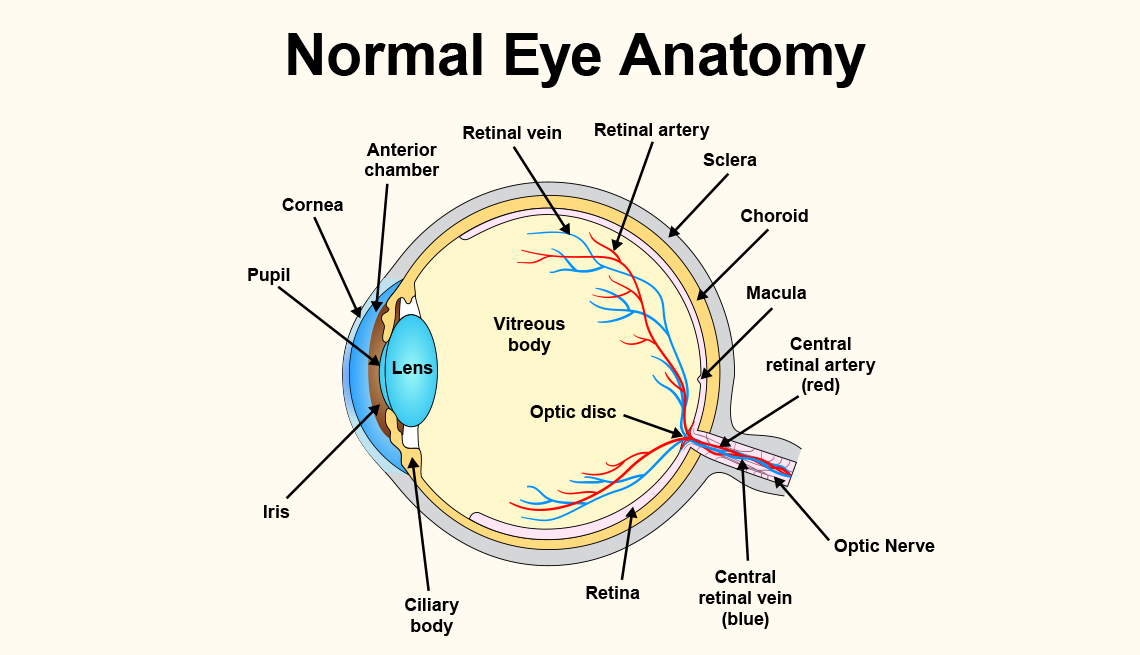4. You can stop switching glasses to read the paper
Even if you don’t have a prescription for glasses, you still need an annual vision exam. Around age 40, people naturally begin to develop presbyopia, a condition in which the lens of the eye loses its ability to change shape and accommodate for different distances. “You can’t read things up close anymore, so you hold materials at an arm’s distance. But by age 55, most can’t struggle through it — their arm just isn’t long enough anymore,” Di Meglio says. Drugstore readers might suffice, but talk to your doctor about prescription readers or progressive lenses, which can improve depth perception. (Progressives take some getting used to, so inform your doctor if you’re at risk for falls.)
5. The latest contacts could change the way you see
Use your yearly eye exam as an opportunity to discuss if there are contact lens options that can make your life easier. New materials can improve comfort and let contact lenses solve more than one vision issue at a time. For example, toric lenses can treat astigmatism, orthokeratology lenses help reshape the cornea to correct myopia (near-sightedness), and multifocal contacts combine multiple prescriptions in one lens.
6. You may be able to ditch wearing glasses forever
Eye tests over 60 include screening for cataracts. A clouding of the lens of the eye, a cataract can develop so slowly that you may not notice the difference initially. For some, cataracts begin to grow in their 50s, or even at age 40. By age 80, more than half of Americans have had one. But cataract surgery can liberate some people from glasses altogether, Wisner says. The procedure is quick (one hour), downtime is short (no more than a few days), and new techniques mean that some people won’t need post-op eye drops.
7. You don’t need to drive with glare
If night driving is becoming increasingly challenging, ask about antireflective lenses for your glasses, optometrist Barbara Horn suggests. “If your eyes are healthy with no or minimal cataracts, antireflective lenses are the most common solution,” she says. That said, for folks who are over age 75, nighttime driving almost doubles the risk of being injured in a traffic accident, research suggests. At an annual vision exam, your eye care provider can talk to you about ways to make driving at night — or during the day — safer and make sure you’re being treated for any eye-related diseases.
8. Those eye floaters could signal something bigger
Regardless of how recently you’ve been to the eye doctor, you should also schedule a visit for an eye exam when something feels wrong with your vision. For example, with aging, the gel-like substance in the eyes, called the vitreous, begins to shrink; it may even separate from the retina, says Elena Roth, M.D., an ophthalmologist with the University of Miami Health System. One symptom of this might be seeing floaters and flashes in your vision. Most of the time you won’t need to be treated for floaters, but you will need to be closely followed by your doctor to watch for a retinal tear, a complication that can lead to vision loss.
The good news is that those floaters usually stop bothering you eventually. “After three to six months, the brain learns to adjust and accommodate them,” Roth says.
9. If you have diabetes, see your eye doctor — it’s critical
If you have diabetes, you have a 25-fold higher risk of developing blindness compared to the general population. Here’s where the importance of eye exams comes in: Most of that vision loss can be prevented when you see your ophthalmologist regularly to catch problems as they start. How often should you go to the eye doctor if you have diabetes? Every year.
“Diabetes is a disease of blood vessels. In the eye, it causes bleeding and leakage of fluid in the retina, which can cause loss of vision,” Wisner says. That’s why an annual dilated exam is crucial. What’s going on in your eyes is a direct reflection of what’s happening in your kidneys, he adds; if a vision exam shows diabetes is not well controlled, you have an opportunity to take steps to preserve your eyesight — and the rest of your body.







































































More on Eye Health
8 Bad Habits for Your Eyes
Everyday actions that can affect your vision and your healthCould You Have Light Sensitivity?
What your eyes might be telling you when brightness causes discomfort
How to Protect Your Vision
21 ways to take charge of your eye healthRecommended for You